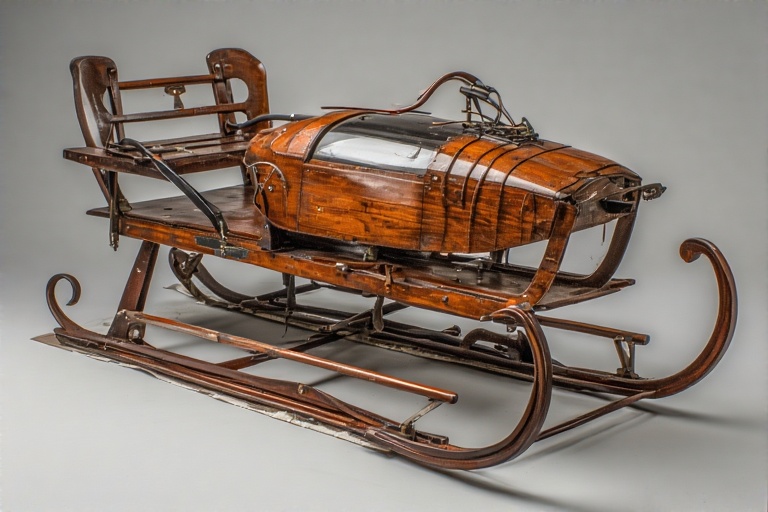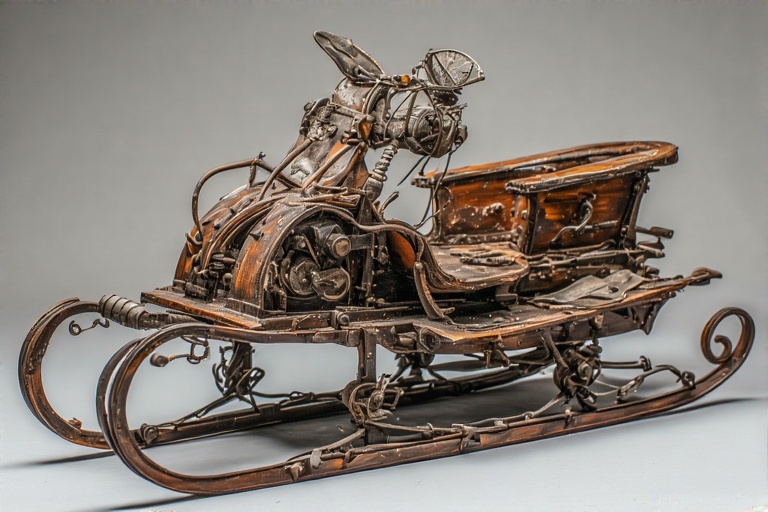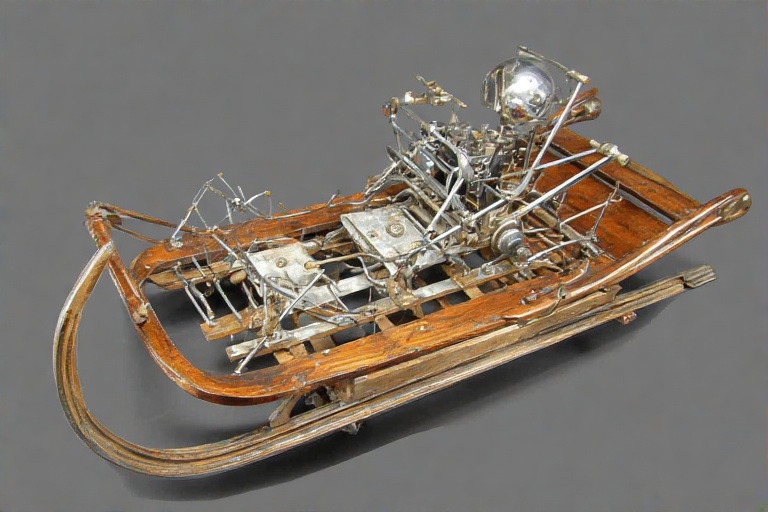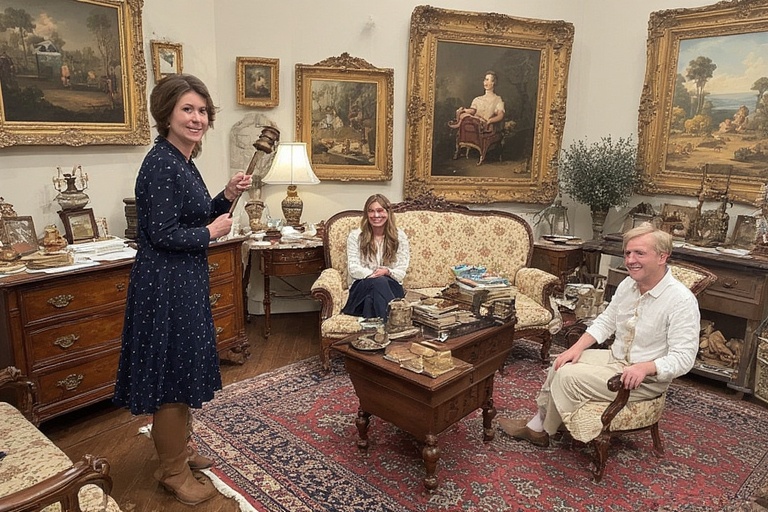
Flexible Flyer Sled Model No 251H
Introduction
The Flexible Flyer sled is a beloved symbol of American winter traditions, renowned for its innovative design and lasting appeal. Among its many models, the Flexible Flyer Sled Model No 251H stands out as a cherished variant, celebrated for its safety features, steerability, and classic aesthetic. This article explores the rich history of the Flexible Flyer brand, the unique characteristics of the Model No 251H, its cultural significance, and its value to collectors, offering a comprehensive look at why this sled remains a timeless treasure.
History of the Flexible Flyer Sled
The Flexible Flyer story began in 1889 when Samuel Leeds Allen, a farmer and inventor from Cinnaminson, New Jersey, patented a revolutionary steerable wooden sled. Unlike the rigid toboggans and gooseneck sleds of the era, the Flexible Flyer allowed riders to control their descent, transforming winter recreation. Allen initially produced these sleds in his farm equipment factory to keep workers employed during the off-season. However, early sales were slow until he began marketing to toy departments in department stores like Wanamaker’s and Macy’s. By 1915, the brand’s popularity soared, with approximately 120,000 Flexible Flyer sleds sold, including a single day when nearly 2,000 were purchased.
The Flexible Flyer brand evolved through several ownership changes. In 1968, Leisure Group acquired S.L. Allen Company, continuing production in Medina, Ohio. In 1973, private investors purchased the toy division, renaming it “Blazon Flexible Flyer” and moving production to West Point, Mississippi. By 1993, Roadmaster took over, relocating manufacturing to Olney, Illinois, and in 1998, production shifted to China. Despite these transitions, the Flexible Flyer Sled Model No 251H and other models retained their iconic status, with some production returning to South Paris, Maine, under Paricon, Inc., by 2012.

Evolution of Flexible Flyer Models
The Flexible Flyer brand introduced various model series, each reflecting advancements in design and safety. Early models (1889–1908) featured flat runners, followed by the B Series (1908–1914) with grooved runners and wooden bumpers. The C Series (1915–1928) introduced all-steel front ends, and the F Series (around 1928) brought articulated steering bumpers for enhanced control. The G Series (1930–1935) added safety-focused runner designs.
In 1935, the Airline Series, including the Flexible Flyer Sled Model No 251H, was launched, featuring “safety runners” with ends curled back to the top of the last cross support to prevent injuries during collisions. The Airline Series included models like Ace (37″), Pilot (41″), Patrol (44″), Pursuit (47″), Junior (51″), Chief (55″), Racer (60″), and Cruiser (65″), with model names later replaced by number/letter combinations reflecting their length. The Flexible Flyer Sled Model No 251H, at 51 inches, was part of the Junior category, designed for versatility and safety.
| Model Series | Period | Key Features | Notes |
| First Series | 1889–1908 | Flat runners, goose neck runner | Up to 6 sizes, extended runner length on ice |
| B Series | 1908–1914 | Grooved runners, wooden bumper | Wooden side rails forward |
| C Series | 1915–1928 | All-steel front end, modified logo in 1921 | Eagle with sled logo |
| F Series | ~1928 | Articulated bumper, diamond patterns | Short-lived, coexisted with E Series |
| G Series | 1930–1935 | Three-piece bumper, safety runner ends | Coexisted with Airline Series |
| Airline Series | 1935– | Safety runners, model names by length | Includes Flexible Flyer Sled Model No 251H (51″) |
Features of the Flexible Flyer Sled Model No 251H
The Flexible Flyer Sled Model No 251H, part of the Airline Junior series introduced around 1935, is a 51-inch sled crafted for both performance and safety. Its birch wood deck is lightweight yet durable, suitable for children and adults. The steel runners, powder-coated in red, feature safety ends that curl upward, reducing the risk of injury during sledding. The sled’s steering mechanism, a hallmark of the Flexible Flyer brand, allows riders to shift the front wooden cross-piece with their hands or feet, bending the flexible rails to navigate slopes effortlessly.
The Flexible Flyer Sled Model No 251H also bears the iconic eagle-and-arrow logo, often accompanied by a red oval with “Super Steering” text, enhancing its visual appeal. Pre-drilled holes allow for rope attachment, adding to its functionality. Produced primarily in the 1950s, with some sources suggesting a range from 1950 to 1960, this model is noted for its robust construction and nostalgic charm, making it a favorite among vintage sled enthusiasts.

Cultural Significance of the Flexible Flyer Sled
The Flexible Flyer sled, including the Flexible Flyer Sled Model No 251H, is deeply embedded in American culture, symbolizing the joy of winter play. Its appearances in popular media highlight its nostalgic appeal. In the 1983 film A Christmas Story, children are seen sledding on Flexible Flyer sleds, reinforcing the brand’s association with holiday traditions. Similarly, in National Lampoon’s Christmas Vacation (1989), the Griswold family’s sledding scene features Flexible Flyer sleds, adding to the comedic and nostalgic portrayal of winter fun.
Beyond film, Flexible Flyer sleds appear in literature, such as John Updike’s The Centaur, where they evoke memories of childhood and family bonding. Social media platforms like Reddit also reflect the sled’s cultural impact, with users sharing stories of racing down hills on their Flexible Flyer Sled Model No 251H or similar models, often describing them as the “fastest on the hill.” These anecdotes underscore the sled’s role as a cherished part of American winters, connecting generations through shared experiences.
Collecting Flexible Flyer Sleds
Vintage Flexible Flyer sleds, particularly the Flexible Flyer Sled Model No 251H, are highly sought after by collectors for their historical and aesthetic value. According to The Intelligencer, antique sleds from the late 1800s to early 1900s can fetch hundreds to thousands of dollars, depending on condition and rarity. The Flexible Flyer Sled Model No 251H, produced around the 1950s, is valued for its well-preserved wood and steel components, often displayed as folk art in homes or museums.
Collectors should verify authenticity by checking for the Flexible Flyer logo, model number (e.g., “251H” on the deck’s underside), and original paint or decals. Resources like sledhill.com provide detailed guides for dating sleds based on design features. Condition is critical—cracks in the wood or rust on the runners can lower value. Auction sites like eBay and Craigslist frequently list the Flexible Flyer Sled Model No 251H, with prices ranging from $100 to $150 for well-maintained examples.
| Collector Tips | Details |
| Authenticity | Look for eagle-and-arrow logo, model number (e.g., 251H), and original decals. |
| Condition | Check for intact wood, minimal rust, and preserved paint. |
| Resources | Use sledhill.com for dating and identification. |
| Market Value | Vintage Flexible Flyer Sled Model No 251H typically sells for $100–$150, higher for rare conditions. |
Conclusion
The Flexible Flyer Sled Model No 251H is more than a sled; it’s a testament to American ingenuity and a nostalgic link to winter traditions. Its safety runners, steerable design, and durable construction have made it a favorite for decades, while its collectible status ensures its legacy endures. Whether you’re racing down a snowy hill or displaying it as a piece of history, the Flexible Flyer Sled Model No 251H embodies the joy and simplicity of winter fun. As collectors and enthusiasts continue to cherish this iconic sled, its place in American culture remains as strong as ever.
FAQs
- What makes the Flexible Flyer Sled Model No 251H unique?
The Flexible Flyer Sled Model No 251H features safety runners and a steerable design, part of the Airline Junior series, offering both performance and safety. - How can I date my Flexible Flyer sled?
Websites like sledhill.com offer guides to identify models based on runner design, logos, and model numbers. - Where can I buy a vintage Flexible Flyer Sled Model No 251H?
Check auction sites like eBay, Craigslist, or antique stores, ensuring authenticity and good condition. - What is the value of a vintage Flexible Flyer Sled Model No 251H?
Depending on condition, it typically sells for $100–$150, with rare, well-preserved examples fetching higher prices. - Are Flexible Flyer sleds still produced today?
Yes, Paricon, Inc. produces some models in South Paris, Maine, while others are made in China, maintaining the brand’s legacy.



